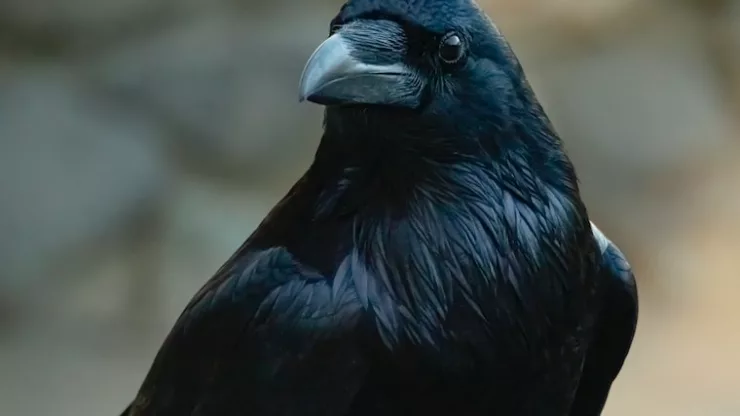As cities continue to grow, the importance of urban wildlife conservation becomes increasingly vital.
Urbanization can lead to habitat fragmentation and destruction, which can have devastating effects on wildlife populations.
However, many cities are taking action to protect their wildlife, and as a result, there have been some inspiring success stories.
In this article, we will explore some of these examples and examine the strategies that cities are using to conserve their urban wildlife.
Jump to Section
Introduction
Urbanization has brought many benefits to humanity, but it has also had a significant impact on wildlife.
As cities grow, they often destroy habitats, fragment ecosystems, and disrupt animal behavior.
However, many cities are taking action to conserve their wildlife.
By creating safe habitats, educating the public, and incorporating wildlife conservation into city planning, they are making a positive difference for their urban wildlife populations.
Urban Wildlife Conservation Success Stories: How Cities are Protecting their Wildlife
Introduction: The Growing Importance of Urban Wildlife Conservation
Urban wildlife conservation has become increasingly important in recent years. As more people move into cities, the impact on wildlife becomes more significant.
However, cities are also becoming more aware of the importance of conserving their wildlife.
Many cities are now taking steps to protect their urban wildlife populations, and some of these efforts have been highly successful.
The Role of Community Engagement in Urban Wildlife Conservation Efforts
Community engagement is a crucial component of successful urban wildlife conservation efforts.
When communities are engaged in conservation efforts, they can help create safe habitats for wildlife, educate the public, and advocate for wildlife protection policies.
Creating Safe Habitat for Wildlife in Urban Areas
Creating safe habitat for wildlife in urban areas is essential for their survival. Cities can support wildlife by creating green spaces, such as parks, gardens, and natural areas.
These spaces provide food, shelter, and breeding grounds for urban wildlife.
Case Study: Community Gardens as Habitat for Urban Wildlife
Community gardens are an excellent example of how cities can create safe habitats for wildlife in urban areas.
These gardens provide food and shelter for a variety of wildlife, including birds, bees, and butterflies.
They also serve as educational tools, allowing communities to learn about the importance of urban wildlife conservation.
Educating the Public About Urban Wildlife Conservation
Educating the public about urban wildlife conservation is essential for creating a culture of conservation in cities.
When people understand the importance of urban wildlife, they are more likely to take action to protect it.
Case Study: The Success of Wildlife Rehabilitation Centers in Urban Areas
Wildlife rehabilitation centers are an excellent example of how cities can educate the public about urban wildlife conservation.
These centers provide care for injured and orphaned wildlife while also educating the public about the importance of wildlife conservation.
By raising awareness about urban wildlife, rehabilitation centers can inspire people to take action to protect it.
Urban Wildlife Conservation Through Policy and Planning
Incorporating wildlife conservation into city policy and planning is essential for protecting urban wildlife.
Cities can create policies that protect wildlife habitats, restrict development in critical areas, and promote sustainable development.
Case Study: Incorporating Wildlife Conservation into City Planning
Seattle, Washington, is an excellent example of a city that has incorporated wildlife conservation into its city planning.
The city’s Urban Forest Stewardship Plan aims to protect and expand the city’s forested areas, which provide critical habitat for wildlife.
The plan also includes policies to protect wildlife habitat and promote sustainable development.
The Future of Urban Wildlife Conservation
The future of urban wildlife conservation is bright.
As cities continue to grow, there will be more opportunities to create safe habitats, educate the public, and incorporate wildlife conservation into city planning.
Case Study: Innovative Approaches to Urban Wildlife Conservation
Innovative approaches to urban wildlife conservation are emerging all the time. For example, cities are experimenting with green roofs, which provide habitat for a variety of wildlife.
They are also using technology to monitor wildlife populations and track migration patterns.
Conclusion: The Importance of Continued Efforts in Urban Wildlife Conservation
Urban wildlife conservation is essential for protecting wildlife in cities.
By creating safe habitats, educating the public, and incorporating wildlife conservation into city policy and planning, cities can make a significant difference for their urban wildlife populations.
However, there is still much work to be done, and continued efforts are necessary to ensure the survival of urban wildlife.
FAQ
What is urban wildlife conservation?
Urban wildlife conservation is the practice of protecting and conserving wildlife in cities.
It involves creating safe habitats, educating the public, and incorporating wildlife conservation into city policy and planning.
Why is urban wildlife conservation important?
Urban wildlife conservation is essential for protecting wildlife in cities. As cities grow, they often destroy habitats and disrupt ecosystems, which can have devastating effects on wildlife populations.
However, by creating safe habitats, educating the public, and incorporating wildlife conservation into city policy and planning, cities can make a significant difference for their urban wildlife populations.
What can individuals do to help with urban wildlife conservation?
Individuals can help with urban wildlife conservation by creating safe habitats in their own yards and communities, supporting wildlife rehabilitation centers, and advocating for wildlife-friendly policies in their cities.
They can also educate themselves and others about the importance of urban wildlife conservation.
How can cities incorporate wildlife conservation into city planning?
Cities can incorporate wildlife conservation into city planning by creating policies that protect wildlife habitats, restrict development in critical areas, and promote sustainable development.
They can also create green spaces, such as parks and natural areas, that provide food, shelter, and breeding grounds for urban wildlife.
I’m a nature enthusiast and creator of Metro Wilds and have spent years exploring the great outdoors.
With a passion for environmental conservation and sustainability, I have dedicated my career to writing about the beauty and wonders of nature, as well as the threats facing our planet.
Contact me at [email protected] for assistance.





